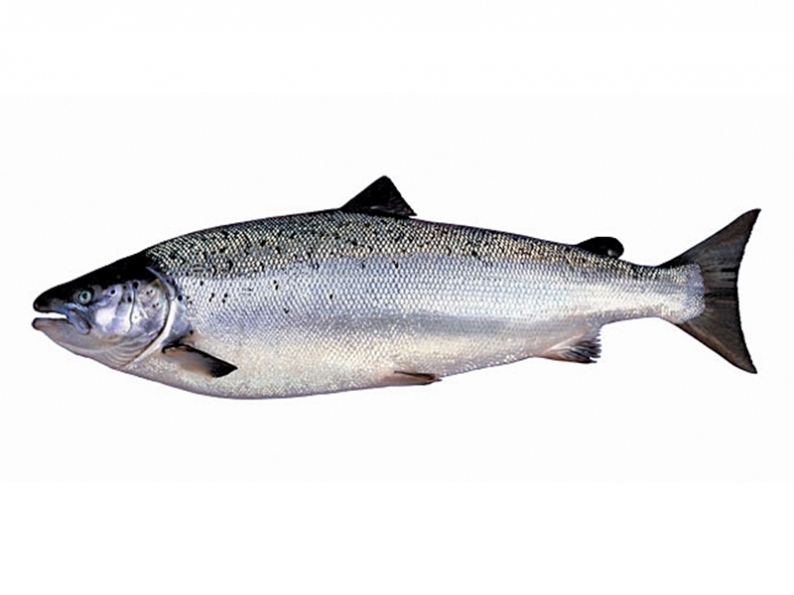
Salmon interest in lakes Oahe and Sakakawea has diminished a bit since the Great Flood of 2011, in conjunction with losses of primary forage rainbow smelt and salmon losses themselves. But, the situation is rebounding.
First, let’s take a look at South Dakota Game, Fish & Parks’ plans for introducing Atlantic salmon into the Oahe.
Atlantic Salmon
Initially, plans to stock Atlantic salmon into Lake Oahe have been on the table for several years, with actual stocking to take place next year. However, the program has been pushed back at least one more year.
“The U.S. Fish & Wildlife Service (FWS) was unable to provide us with (salmon) eggs last January,” said SD fisheries biologist Will Sayler. “They discontinued their brood stock for those fish and as a result we have no long-term source for the (Atlantic salmon) eggs.”
The department is now in the permit stage with the FWS to search for an egg source in the United Kingdom, Sayler said. It will be an involved process, and in the end, the eggs will need to meet the health standards of both the FWS and South Dakota Game, Fish & Parks.
“Right now, the earliest time period we could receive eggs would be next winter,” Sayler said, adding that they’d raise the fish for a year at McNenny and Cleghorn hatcheries in the Black Hills, then evaluate their performance before stocking. Thus, from this point, Atlantic stockings would not occur until the fall of 2017.
“We want to cover all the bases,” Sayler said. “We think this thing should proceed, but we need to make sure these fish can meet the health specs. We’re being very careful about that.”
Mostly, Sayler said, officials are concerned with any potential for disease, which might affect not only Atlantic salmon but other species in Oahe and the rest of the Missouri River system.
When plans were advanced enough to go public last year, anglers could express their opinions on the proposed introduction. Overall, Sayler said, response was 70 percent in support of the plans, although there were some concerns from walleye anglers on the potential for the salmon to compete with walleyes for food.
Sayler indicated that shouldn’t be a problem.
“We can’t find any significant link between the two and feeding habits,” he said.
The department, initially plans on stocking some 400,000 Atlantic salmon when and if the plan moves to reality. Stockings of Chinook salmon would be reduced to compensate, so the system isn’t overworked with predator fish.
There would be no expected natural reproduction for either Atlantic or Chinook salmon, Sayler emphasized, indicating that if the Atlantic stocking doesn’t lead to success after a few years, they could discontinue it, and their numbers would disappear.
Chinook salmon in the Missouri River system have a life expectancy of around 4 years, while Atlantic salmon live a bit longer at an 8-year average. The advantage of the new introduction, Sayler said, would be to provide new angling opportunities for fishermen and make use of part of the system that is currently all but absent of fish.
Chinook Salmon
The Great Flood of 2011 hurt both predator fish and forage. After 4 years, things are beginning to return to pre-flood conditions.
While Chinook salmon prefer rainbow smelt for forage and occupy the same territorial zones in the large system, they will, Sayler said, key in on other forage if smelt aren’t available. Young-of-the-year forage including white bass, drum, crappies, perch, lake herring and gizzard shad have helped to sustain salmon (and walleye) numbers during the rebuilding stage of Oahe and the rest of the system since the flood.
Sayler said there was strong lake herring reproduction in Oahe in 2014, but after two years of age they get too big for salmon for consume. On the plus side, however, larger lake herring are a good source of northern pike forage right now, no matter the size. (Pike are flourishing in Oahe, and bigger pike need bigger forage. See related story this issue.)
South Dakota biologist Bob Hanten is optimistic that Chinook salmon will continue to improve in size and numbers as the condition of rainbow smelt improves. He says some 193,000 Chinooks will be stocked into Oahe later this summer.
“The goal was to stock more salmon, but was limited due to the quantity and quality of salmon eggs available from the 2014 spawn,” he told Dakota Country.
Hanten cited the importance of forage for the growth and survival of Chinook salmon in particular.
“Rainbow smelt and juvenile lake herring are the primary food for Chinook salmon,” he confirmed. “Gizzard shad was an important prey item for Chinook salmon in the mid-2000s when shad were abundant,” he said. “In 2014, a strong year class of lake herring was produced, providing adequate prey for Chinook in Oahe.”
Hanten said things continue to improve for Chinook, along with other predator and forage fish, since the disastrous flood.
“The number and weight of jacks (2-year-old male salmon) that returned to Whitlock station in the fall of 2014 both increased,” he told Dakota Country. “This indicates the number and size of 3-year-old salmon available is continuing to improve from previous low post flood salmon years.” •